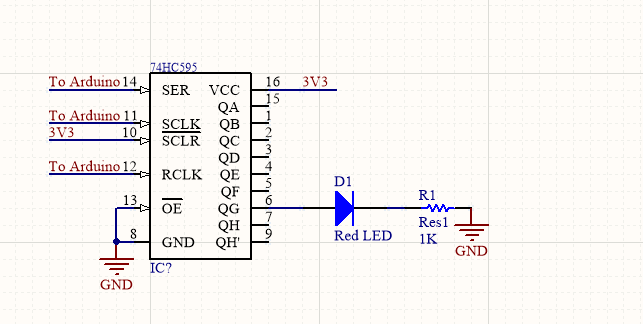I'm trying to get an SN74HC595N working with an Arduino Due. Eventually I will be hooking up each output to an NPN transistor to drive Nixie tubes (I am switching my design from a Due to using an ESP8266, so I need to cut back on the pin use, hence the shift register).
I have been using this as the schematic to get working (except using 3.3 V instead of 5 V since I'm using a Due).
When set up according to the schematic nothing works (I'm using the same code too), however, when reversing the polarity of the LEDs and hooking them up to high, it works, so the 74HC595 is working fine as a sink, but it doesn't seem to be sourcing.
Am I missing something to make it source?
Here is what I have set up (currently only using 1 LED just to make sure things work):
And here is it set up with the 74HC595 as a source (which is not currently working):





